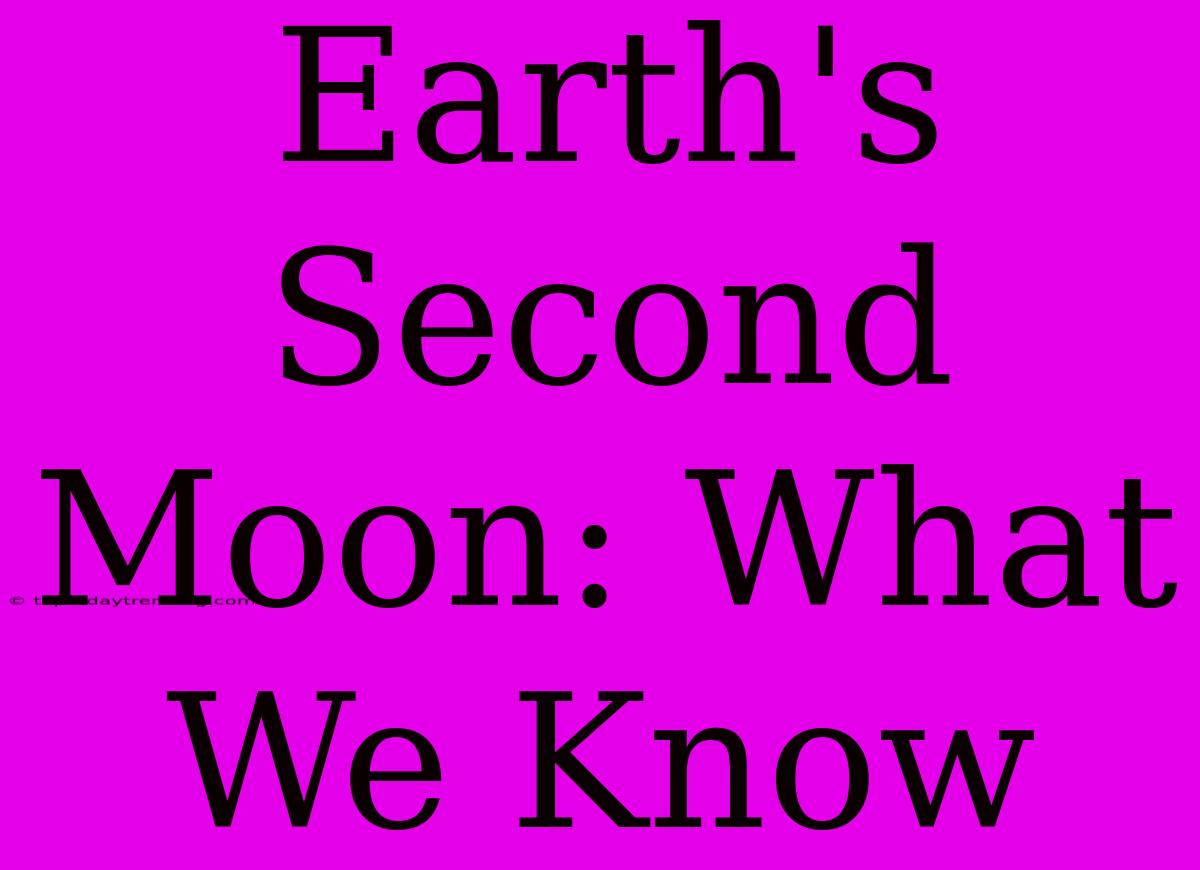Earth's Second Moon: What We Know
The idea of Earth having a second moon might sound like something out of science fiction, but it's a topic that's been swirling around the scientific community for decades. While the existence of a second moon is still a subject of debate, there's compelling evidence suggesting that Earth might have a temporary companion orbiting our planet.
The "Mini-Moon" Theory
The most likely candidate for Earth's second moon is a quasi-satellite, a celestial body that orbits the Sun but is also gravitationally influenced by Earth, making it appear as if it's orbiting our planet.
Here's what we know about these mini-moons:
- They are temporary companions: They don't orbit Earth permanently, but rather "borrow" its gravitational pull for a while before moving on.
- They are small: These mini-moons are typically much smaller than our main moon, ranging in size from a few meters to a few hundred meters across.
- They are numerous: Scientists believe there might be numerous mini-moons constantly orbiting Earth, although most remain undetected due to their small size and fleeting presence.
2006 RH120: A Mini-Moon in the Spotlight
In 2006, astronomers discovered a mini-moon named 2006 RH120, which remained in Earth's gravitational grasp for a few months before drifting off into its own orbit around the Sun.
- The mini-moon was discovered by the Catalina Sky Survey in Arizona.
- It was only about 4-6 meters in diameter.
- It orbited Earth for about a year before moving away.
2006 RH120 is the only confirmed mini-moon to date.
The Quest for More Mini-Moons
The discovery of 2006 RH120 has sparked renewed interest in searching for other temporary mini-moons.
Scientists are using various methods to detect these mini-moons, including:
- Sky surveys: Using telescopes to scan the night sky for any moving objects.
- Spacecraft observations: Utilizing spacecraft like the Hubble Space Telescope to capture images of the Earth's surroundings.
- Mathematical models: Using computer simulations to predict the existence and behavior of mini-moons.
What's Next?
The hunt for Earth's mini-moons is ongoing. As technology advances, scientists are getting better at detecting and characterizing these temporary companions.
The discovery of more mini-moons could help us:
- Learn more about the formation of our solar system.
- Understand the dynamics of gravitational interactions between celestial bodies.
- Explore the possibility of using these mini-moons as potential space resources.
The search for Earth's second moon is an exciting journey of scientific discovery. While we might not have a permanent second moon, the possibility of temporary mini-moons orbiting our planet adds another layer of intrigue to our cosmic neighborhood.

